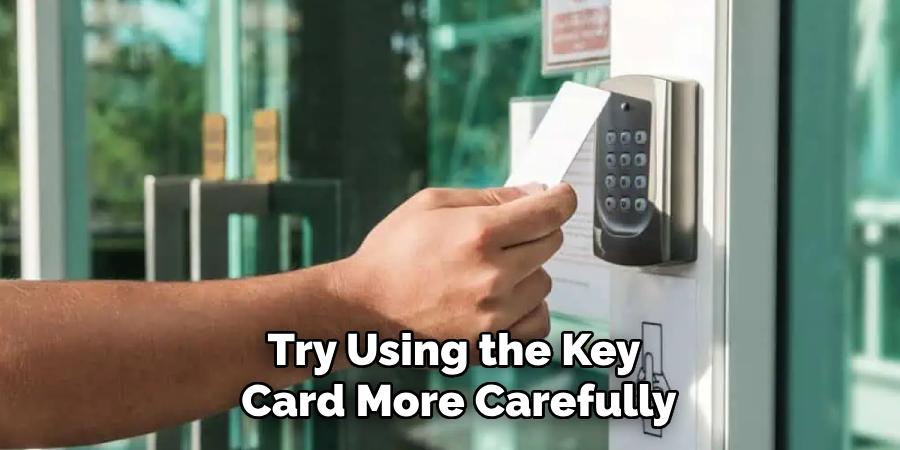Hotel key cards are a modern convenience that simplifies access to rooms and facilities, replacing traditional metal keys. These cards operate through magnetic strips that store coded data specific to each guest’s stay. However, they’re not without issues—common problems arise when key cards lose their magnetic charge. This can happen due to exposure to magnets, close contact with

cellphones, or laying them on demagnetized surfaces. While the idea of restoring a card yourself might seem appealing, knowing “how to remagnetize a hotel key card” effectively is not always straightforward. Often, the simplest solution is to visit the hotel’s front desk for a replacement. Yet, for those seeking a temporary fix, you can try a few tips before heading downstairs, though their success isn’t guaranteed.
How Hotel Key Cards Work
Hotel key cards utilize magnetic stripe technology, commonly known as “magstripe,” which plays a pivotal role in modern travelers’ seamless access experiences. Each magstripe houses data in the form of tiny magnetic particles. Thanks to the hotel’s electronic encoding system, these particles are meticulously aligned in a specific pattern when the card is issued. This encoded data is what
the card readers at hotel room doors detect to either grant or deny access. The magstripe is a portable data storage medium that communicates your access rights to the hotel’s electronic locking system.
Although remarkably convenient, these magstripes are not infallible and are prone to demagnetization. One major culprit of this occurrence is magnetic interference. When key cards are exposed to strong magnetic fields—whether generated by phones, other encoded cards, or electronic devices—the organized pattern of magnetic particles can be disrupted or scrambled, leading to a failure
in data recognition by door readers. Moreover, physical wear and tear also pose a significant threat to the integrity of these magstripes. Continuous use, bending, or mishandling can lead to abrasions or scratches that damage the surface, impairing data retention or diminishing the card’s readability.
Electronic interference represents another hazard; key cards often reside near devices with electromagnetic fields, like cell phones. These fields can interfere with the card’s magnetic encoding, further accelerating the potential for data disruption.
Recognizing the signs of a demagnetized key card can help users address the issue promptly. Common signs include the card failing to unlock the hotel room door or instances where the door reader requires an extended response period, sometimes needing multiple attempts for successful access. Moreover, an unreliable card that works sporadically is a telltale sign of demagnetization.
Understanding these operational dynamics and potential issues is crucial for maintaining the convenience and efficiency that hotel key cards are designed to offer. By identifying the signs early and understanding the mechanisms at play, guests can take proactive measures to mitigate the frustration of being locked out.

How to Remagnetize a Hotel Key Card: Is Remagnetizing a Hotel Key Card Possible?
The prospect of remagnetizing a hotel key card is not as straightforward as it might initially appear. Unlike traditional magnets, hotel key cards rely on the precise arrangement of magnetic particles to function effectively. This intricacy means that the magnetic strip cannot be easily realigned or restored through simple household means, such as running a magnet over it. The required precision in realigning the magnetic particles exceeds the capabilities of common magnets, rendering at-home attempts largely ineffective.
However, hotels can efficiently solve magnetic strip issues thanks to specialized equipment. These establishments are equipped with card encoders that not only encode new cards with the correct access data but can also overwrite and correct corrupted data on existing cards. This technology allows front desk staff to rapidly remediate issues by either providing a replacement card or reinstating access rights, making this the most efficient and reliable solution for guests locked out.
For those who wish to attempt a temporary at-home fix, minimal steps could potentially yield short-term results, though success is not guaranteed. One such measure is gently cleaning the magnetic strip, as dirt or residue can interfere with the card reader’s ability to detect data. To do this, carefully rub the strip to remove any debris. Additionally, slowly and smoothly inserting the card into the door’s
card reader can be beneficial when using the card. This deliberate action sometimes enables the reader to detect the diminished signal and grant access. Despite these do-it-yourself methods offering potential quick fixes, ultimately, visiting the hotel front desk remains the most effective solution for reliable and lasting access.
Preventing Demagnetization of Key Cards
To maintain the functionality of hotel key cards, preventive measures against demagnetization are essential. The first and perhaps most effective strategy is to store key cards separately. Keep them in a protective sleeve or in a pocket away from electronic devices, such as cell phones, or anything with magnetic fields, like magnetic phone mounts in vehicles. This separation reduces the risk of magnetic interference that could scramble the data on the card.

Another crucial step is handling key cards with care. Avoid bending, scratching, or placing the card near sharp objects that could damage the magnetic stripe. Even minor physical damage can impair the card’s communication ability with electronic door locks. Therefore, storing them in a sturdy protective case ensures they stay intact during your stay.
Moreover, it’s important to avoid contact with magnetic items. Avoid placing hotel key cards near common magnetic items like fridge magnets or magnetic purse closures. Additionally, avoid electronic devices emitting strong magnetic fields to prevent inadvertent data disruption.
Lastly, minimizing wear and tear on key cards can contribute significantly to their longevity. When accessing your room, gently insert and remove the card and avoid swiping it unnecessarily. By reducing the number of times the card is used, you prolong its life and maintain its effectiveness. While these preventive measures don’t offer absolute protection, they can drastically reduce the likelihood of encountering issues during your hotel stay.
What to Do When a Key Card Stops Working
When a hotel key card ceases to function properly, it can be a frustrating experience. However, several steps can be taken to troubleshoot and resolve the issue efficiently.
Step 1: Check for Physical Damage
Start by inspecting the key card for any physical damage. Look closely for scratches, dirt, or visible damage on the magnetic stripe. If you notice any dirt or residue, use a soft cloth to gently clean the magstripe. Sometimes, removing debris can restore the card’s functionality, allowing the door reader to successfully detect the encoded data.
Step 2: Try Slow Swiping or Inserting
If a quick inspection doesn’t resolve the problem, try using the key card more carefully. Insert or swipe the card more slowly and firmly. This deliberate action might enable the door reader to pick up weak signals from the magnetic stripe, especially if the magnetic encoding is slightly compromised but still intact.

Step 3: Get a Replacement at the Hotel
When the above methods fail to restore functionality, it’s time to head to the hotel’s front desk. Most hotels are prepared for such situations and can provide a replacement key card promptly at no cost to the guest. The staff will reprogram a new card with your access information, allowing you to regain entry to your room without further delays.
Step 4: Ask for a Key Card Upgrade
For a more permanent solution, inquire about upgrading your key card. Some hotels offer alternatives such as RFID cards or keyless entry systems that use near-field communication (NFC) technology instead of magnetic stripes. These options are generally more durable and less susceptible to interference or physical damage, providing a more reliable way to access your room throughout your stay.
By following these steps, you can effectively address the inconvenience of a malfunctioning key card, ensuring a smoother and more enjoyable hotel experience.
Using Technology to Avoid Magnetic Key Cards
Advancements in technology have paved the way for more secure and user-friendly alternatives to traditional magnetic key cards. One such innovation is the digital key card system, which is available in many hotels through mobile apps. This method allows guests to unlock their rooms using smartphones, relying on Bluetooth or Near-Field Communication (NFC). Magnetic fields do not impact these digital keys, eliminating the risk of demagnetization.
Another high-tech solution is implementing keyless entry systems, which might feature keypads or use RFID (radio-frequency identification) cards. Unlike magnetic stripe cards, RFID cards are more resilient to wear and tear and are not susceptible to demagnetization, offering guests a durable alternative.
The benefits of utilizing digital solutions extend beyond improved reliability. Digital keys stored in smartphone apps considerably reduce the possibility of losing or damaging a physical card, offering greater convenience. Guests appreciate the streamlined experience, as it minimizes the need for replacement cards and enhances overall satisfaction. By adopting these modern technologies, hotels can provide a more seamless and efficient check-in process, catering to the increasingly tech-savvy traveler.

Conclusion
In conclusion, understanding how to remagnetize a hotel key card is less about feasibility and more about prevention, as the intricate realignment of magnetic particles is generally not practical outside a specialized setting. Guests are encouraged to take preventive steps, such as properly storing key cards, handling them carefully, and avoiding exposure to magnetic fields. These measures help
minimize the risk of demagnetization, thereby reducing the inconvenience of needing card replacements. Despite these precautions, requesting a replacement card at the hotel front desk is often more practical if issues arise, ensuring a quick resolution to access difficulties. Moreover, considering adopting digital key alternatives presents a long-term solution, providing enhanced security and
convenience. These keyless systems not only improve the guest experience by eliminating physical card issues but also align with the technological expectations of modern travelers.

